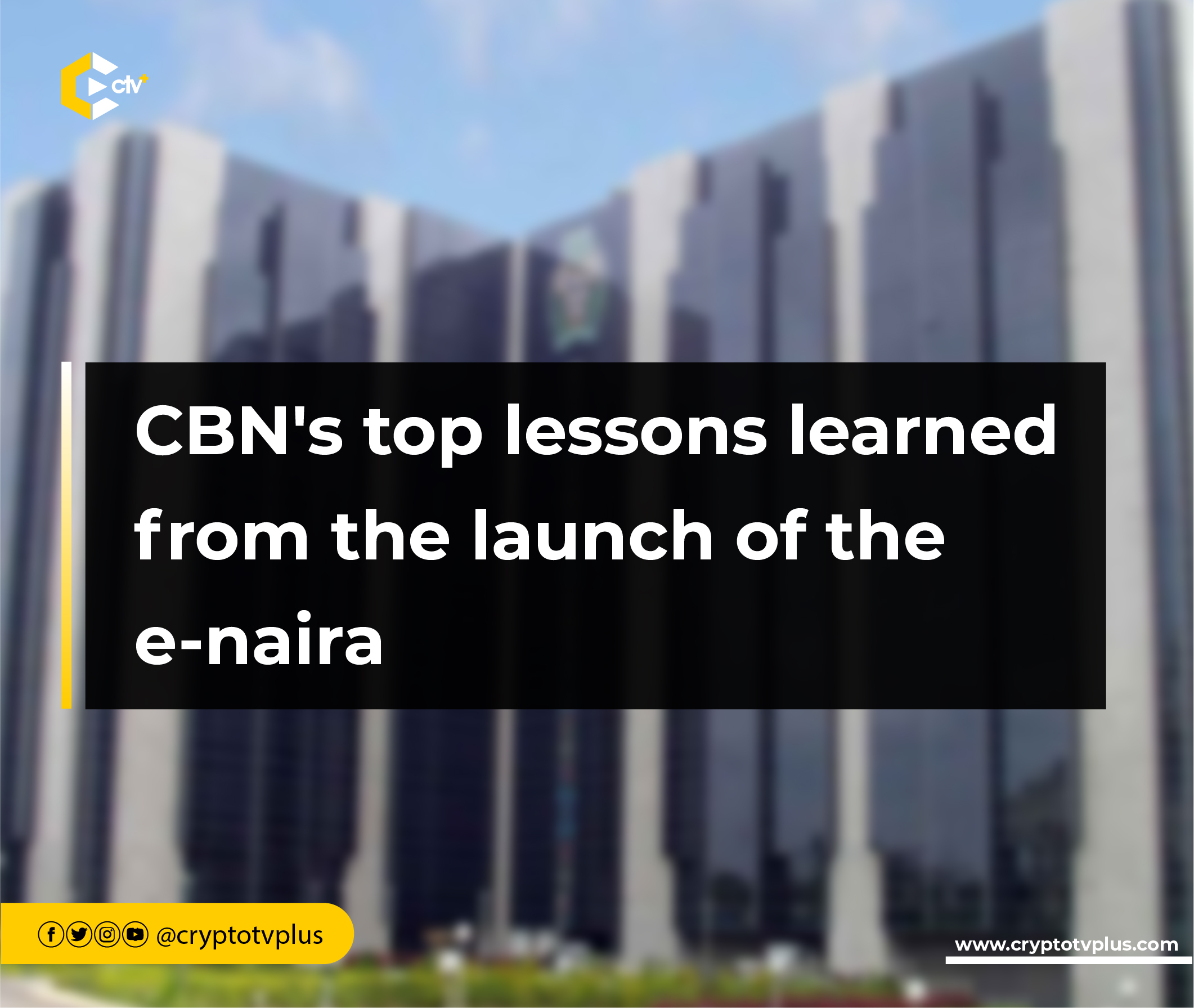News
CBN’s top lessons learned from the launch of the e-naira

In an effort to provide insights into the performance of the e-naira project, the Central Bank of Nigeria has outlined several lessons learned during the two years of CBDC operation.
It’s worth noting that the e-naira was initially launched on October 21, 2021, with the aim of serving as a viable alternative to cryptocurrencies and promoting financial inclusion among Nigerians.
In a report, the apex gave these nine lessons as its reflections as it considers the future of the e-naira which it says presents several opportunities for the nation.
Addressing banking sector concerns
The first feedback mentioned by CBN is that it is aware of the fears expressed by Nigerian commercial banks on the use of the e-naira. This fear is linked to a CBDC-induced disintermediation, where CBN, instead of the commercial banks, begins to serve customers directly leaving the banks with little or no business to undertake.
In response, the CBN stated that it is in the process of developing a tiered wallet structure with specific balances and transaction limits.
Furthermore, it noted that it is working in collaboration with key stakeholders to address the issues because they are real.
Cross-sector collaboration
In the course of the two years of the e-naira, the CBN noted that while it is important to work with banks, there is also a need to collaborate with various industries outside the banking sectors.
It emphasized the importance of engaging stakeholders early and consistently throughout the process. ‘Early and continuous stakeholder engagement is crucial.’
This means several organizations will be part of the further development of the e-naira to maximize the ideas that will make the project better for the nation.
Customer digital identity
“It is important to have an existing digital identity for consumers. It is a pre-condition for considering a CBDC,” it said in the report.
Citing an example of an already existing digital identity system, the bank said the bank verification number (BVN) and national identification number (NIN) existed before the launch of the e-naira.
Because the e-naira will run on an online platform as a digital project, there is a need for a similar system that takes care of identity which is also vital for security and regulations.
Others
Additional lessons highlighted include the importance of ensuring that the legal framework for a digital currency aligns with relevant local statutes; deal with all concerns of key stakeholders that will be affected positively and negatively by the adoption of a CBDC; start small and grow in phases to avoid disruption of the economy, and losing customer trust; and create a rule for a “minting, issuing and circulating a CBDC” because of the unique challenges compared with minting physical notes and coins.
The final two points emphasize the importance of having adequate internal resources, both in terms of finances and technical expertise, even when external consultants are involved.
Furthermore, the cost of introducing a CBDC relies on factors such as the state of the existing payment infrastructure, the available workforce, familiarity with electronic transactions, and related considerations.
It added that for the e-naira, because of the presence of robust digital infrastructure in Nigeria, the CBN focused on paying for “the license fee for the blockchain framework, the software expenditure of developing a dedicated website and call center, advisory services, project management itself within the Central Bank, and implementation of the Distributed Ledger Technology.”
These lessons provide a blueprint for other nations considering CBDC adoption. They underscore the importance of meticulous planning, stakeholder engagement, and legal framework development in ensuring the successful deployment of a digital currency.
Read also; CBN eyes 20M eNaira wallets, 300M in volume by 2026
























